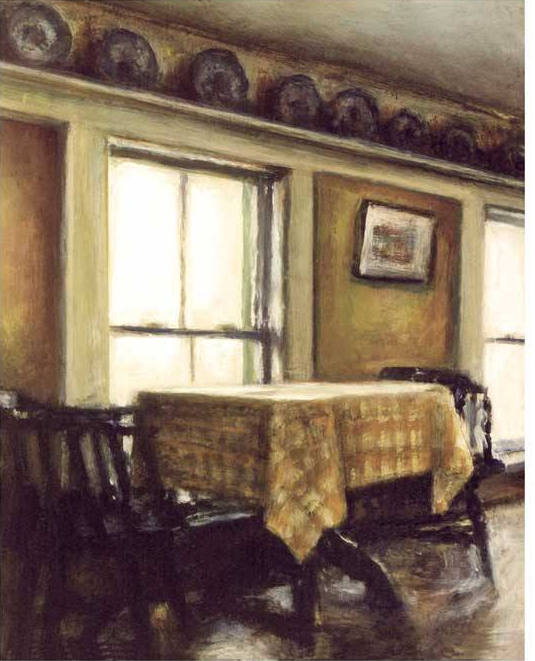
ELIZABETH SOLOMON defines her work as documentation that “pays homage to intimism - the tradition in art that gives significance to the familiar, unnoticed and unguarded moments of everyday life.” The visual representation of her “domestic geography” has a Hopperesque quality. But where Hopper's paintings of landscapes and “waiting” rooms are often scenes of isolation that evoke feelings of desolation or alienation, Solomon’s “scapes” and “rooms” are inviting and warm: a lamp lit to show the way to a chair; a chair offering up its arms to embrace us. The dishes washed at the end of the meal, after the guests are gone, stand ready to repeat the service for us. Like a set of scales in suspended balance all these works present an active and fervent form of waiting. This is not “the familiar made strange” of “postmodernism” but the familiar made profound by passionate intensity. The guest at the Thanksgiving dinner whose presence enlarges the family, and the meaning of the meal, is shown completely and unselfconsciously absorbed in the act of helping himself to some food. A woman asleep over her book is lovingly portrayed in a moment of innocence and vulnerability that becomes perdurable. An open window, defined by a billowing yellow curtain that brings with it the sound and smell of the nearby sea, evokes the very essence of a late summer Sunday morning. Through all these different moments the paintings of Elizabeth Solomon, like those of Vermeer, offer the viewer the rarest of gifts - a glimpse of everyday life caught in the web of infinity.
Patricia J. Mills
Professor Emeritus
University of Massachusetts at Amherst
| 